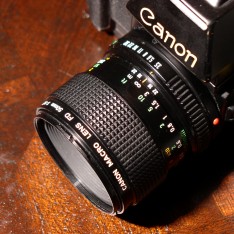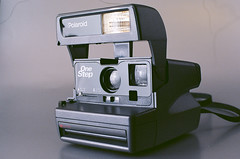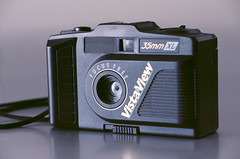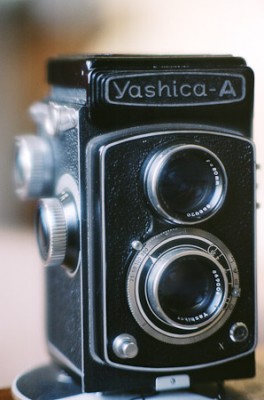 Some time ago I bought the 25mm extension tube for my Canon FD system and have been using it somewhat successfully with the 50 and 135 to get closer focusing. It was a cheap, moderately effective but rather fiddly way to get into macro territory.
Some time ago I bought the 25mm extension tube for my Canon FD system and have been using it somewhat successfully with the 50 and 135 to get closer focusing. It was a cheap, moderately effective but rather fiddly way to get into macro territory.
Way back last spring, I found just how fiddly it was as I lumbered around Happy Hollow Gardens, swapping constantly between the 50/1.4 and 135/2.8 with extension. As usual, just about everything bar the close-ups was shot with the 50mm, which I’ve come to realize is my favorite focal length of the ones I have available.
That outing made me realize that I wanted to have the option of having a useful “walk around” lens with close focusing ability for such occasions. I considered the Canon 100 and 50 mm macro lenses for the FD system and a couple of third party 90mm macros which are highly regarded.
The Canon 100 and 50 macros share the same 52mm filter threads as my other FD lenses, the Vivitar and Tokina macros are larger. All my filters are 52mm. Since this will find use as a general purpose optic when I want to travel light with just one lens yet retain close focusing ability, it would be nice if the filters I already have will fit.
Both the 50 and the 100 will go to half life-size by themselves, but with my existing extension tube the fifty will go to 1:1. If I add that combination to my 2x teleconverter, I get a very slow but serviceable twice lifesize.
The fifty macro is usable as a normal lens, though the focus throw is pretty short from 3 feet to infinity and it’s not optimized for infinity focus. I’ll keep it on the camera for a while to see just how well it handles in day to day shooting.
The 100 would have had a more reasonable close-up working distance. Then again, a 200 macro would be better yet. Those seem rather rare, though.
The best part was the price, just a shade over $50 from KEH Camera. The cheapest 100 macro was almost $100. I took a gamble and went with one in BGN (bargain) condition. I have no clue why it was rated that way, but KEH are known for their quite conservative grading. Based on this lens and their friendly return and warranty policies, I’d have no qualms about buying BGN again.
Anyway, enough blabber. I’ll post examples when I’m done shooting the current roll of film.



